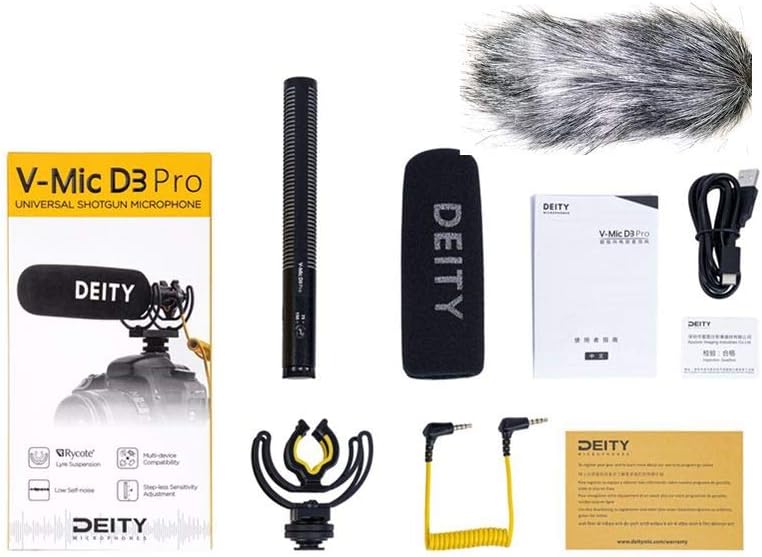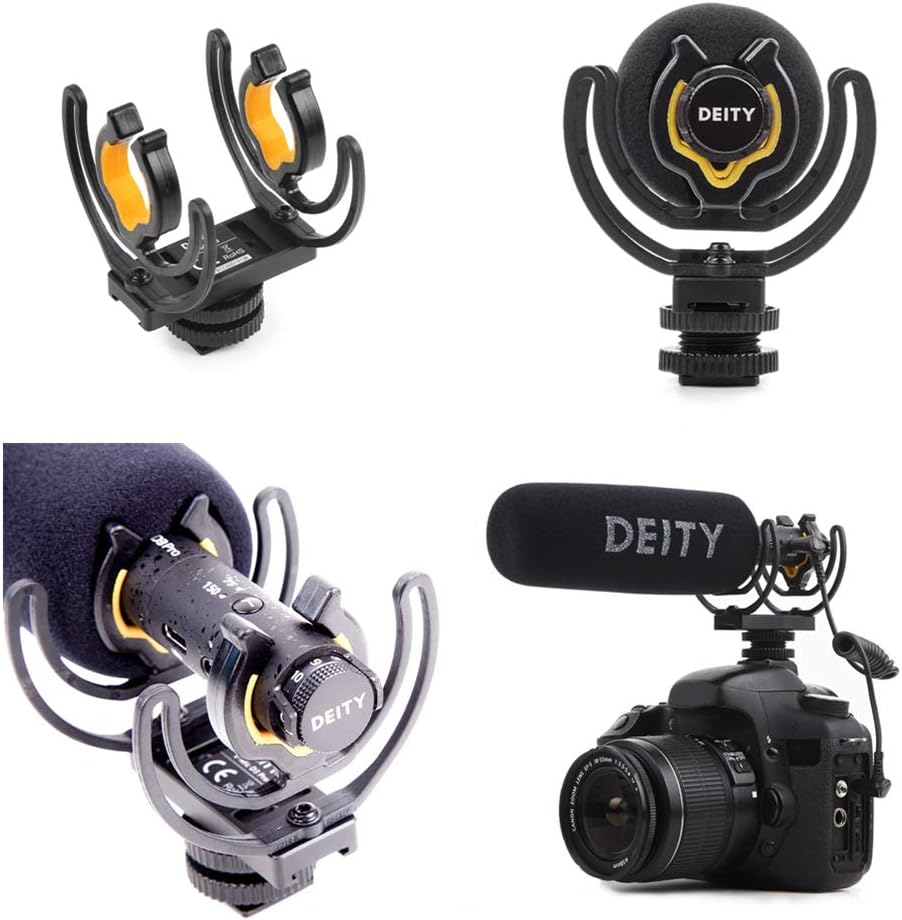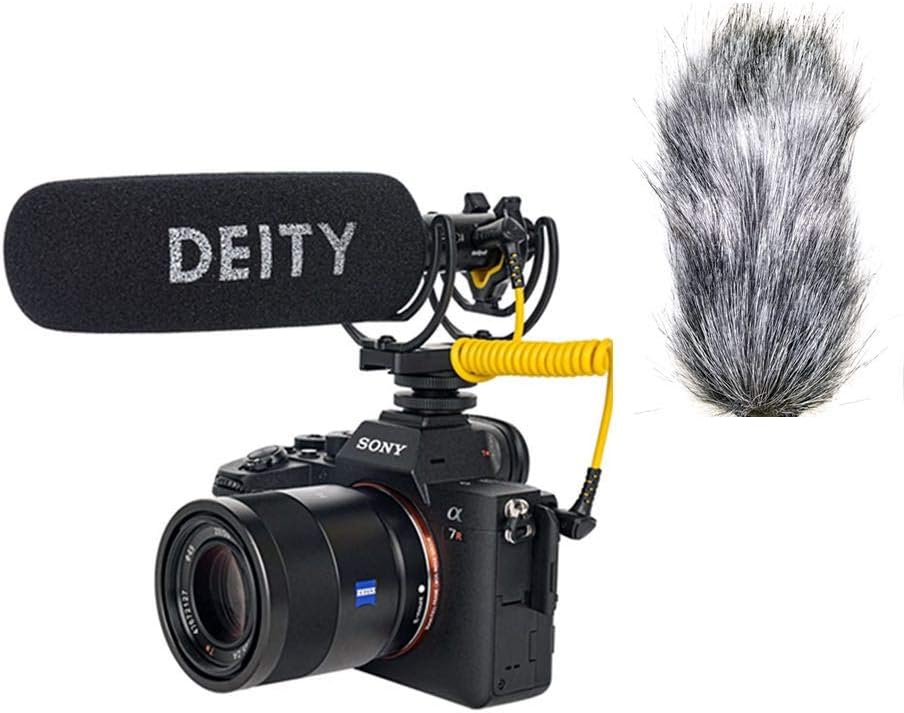Deity V-Mic D3 Review
In the ever-evolving world of content creation, audio quality remains a cornerstone of professional-grade productions. Whether you’re a vlogger, filmmaker, or mobile journalist, the microphone you choose can make or break your project. Enter the Deity V-Mic D3, a super-cardioid directional shotgun microphone designed to deliver high-quality sound at an accessible price point. Launched by Deity Microphones, a company with roots in professional location sound, the V-Mic D3 has garnered attention for its versatility, durability, and performance. In this review, we’ll dive deep into its features, sound quality, build, usability, and value proposition, exploring why it’s become a go-to choice for creators on a budget.
Deity V-Mic D3 Review
The Deity V-Mic D3 is an on-camera shotgun microphone aimed at improving audio capture for a wide range of devices, including DSLRs, camcorders, smartphones, tablets, laptops, and even bodypack transmitters. Priced at around $99 USD, it sits in the budget-friendly category, competing with popular options like the Rode VideoMicro and Audio-Technica ATR6550. What sets the V-Mic D3 apart, however, is its combination of smart features, robust build, and a focus on delivering broadcast-quality sound without unnecessary complexity.
Released alongside its more advanced sibling, the V-Mic D3 Pro, the base model targets beginners, hobbyists, and small-scale creators who need reliable audio without breaking the bank. It’s a lightweight, battery-powered microphone that promises ease of use and compatibility, making it an appealing option for those stepping up from built-in device microphones.
Design and Build Quality
The V-Mic D3 boasts a sleek, minimalist design with a uni-body aluminum chassis. This construction not only gives it a premium feel but also ensures durability—a critical factor for creators working in varied environments. Weighing just 88 grams (excluding the battery and shock mount), it’s light enough to mount on a camera or smartphone rig without adding significant bulk. The low-reflection black finish helps it blend seamlessly with professional setups, avoiding unwanted glare in video shots.
One of the standout design elements is the included Rycote Lyre shock mount, co-engineered with Deity. Unlike cheaper foam mounts found on some budget mics, the Rycote Lyre suspension effectively isolates the microphone from handling noise and vibrations. The shock mount features a cold-shoe attachment for cameras, but it also includes a 1/4-inch thread, allowing it to be mounted on tripods, boompoles, or other stands. This versatility is a huge plus for creators who might want to experiment with off-camera setups.
The microphone itself is compact, measuring approximately 15cm in length, making it less obtrusive than longer shotgun mics like the Rode NTG series. It’s powered by a single AAA battery, which slots into a compartment on the side. A small power switch with an LED indicator (green for on, red for low battery) adds to its user-friendly design. The V-Mic D3 also comes with a foam windscreen, though for outdoor shoots, users might want to invest in a windjammer for extra protection against wind noise.
While the build quality feels solid, some users might notice that the aluminum body, while lightweight, doesn’t exude the same heft as higher-end mics. However, for its price range, the V-Mic D3 strikes an impressive balance between portability and resilience.
Key Features

The Deity V-Mic D3 is packed with features that cater to its target audience of beginner-to-intermediate creators. Here’s a breakdown of its most notable aspects:
1. Super-Cardioid Polar Pattern
The V-Mic D3 uses a super-cardioid pickup pattern, which provides a tight, directional focus on sound sources directly in front of the microphone. This design excels at rejecting off-axis noise, such as background chatter or ambient hum, making it ideal for interviews, vlogs, and outdoor recording where control over sound direction is key. While not as narrow as a hyper-cardioid or true shotgun mic, it offers a good compromise for general-purpose use.
2. Smart TRRS Connectivity
One of the V-Mic D3’s most innovative features is its microprocessor-driven 3.5mm TRRS output. This “smart” connector automatically detects the device it’s plugged into and adjusts its configuration accordingly. Whether you’re using a DSLR, smartphone, or laptop, the mic adapts without requiring additional adapters (though late-model iOS devices may need Apple’s Lightning to 3.5mm headphone jack adapter). This plug-and-play simplicity is a boon for creators who switch between devices frequently.
3. Long Battery Life
Powered by a single AAA battery, the V-Mic D3 delivers exceptional runtime—up to 166 hours with an alkaline battery and over 208 hours with a lithium one. The mic enters standby mode when the connected device is off, conserving power and eliminating the frustration of a dead battery from forgetting to switch it off. In standby, it can last an astonishing 6,000+ hours (over 250 days), making it a reliable companion for sporadic use.
4. Auto On/Off Functionality
Tied to its smart connectivity, the V-Mic D3 automatically powers on when the recording device is activated and shifts to standby when it’s turned off. This feature enhances ease of use and ensures the mic is always ready when you are, without manual toggling beyond the initial power switch activation.
5. High Signal-to-Noise Ratio
With a signal-to-noise ratio (SNR) of 78dB at -32dB sensitivity, the V-Mic D3 promises clean audio with minimal background hiss. Its sound pressure level (SPL) of 134dB allows it to handle loud sources without distortion, while the frequency response of 20Hz to 20kHz captures the full range of human hearing. These specs position it as a capable performer for its class.
6. No Gain Control (By Design)
Unlike the V-Mic D3 Pro, which offers a stepless gain knob, the base model has no manual gain adjustment. This simplifies operation for beginners but might limit flexibility for advanced users who need precise control over input levels. The mic relies on the recording device’s preamps to set gain, which works well with devices that have decent audio circuitry.
Sound Quality
The heart of any microphone review lies in its audio performance, and the V-Mic D3 doesn’t disappoint for its price point. Its 14mm prepolarized condenser capsule delivers a natural, flat frequency response, avoiding the exaggerated bass boost found in some competitors. This results in a realistic sound profile that’s well-suited for dialogue, voiceovers, and environmental recordings.
In controlled indoor settings, the V-Mic D3 captures clear, warm vocals with good detail. The super-cardioid pattern effectively minimizes room noise, though it’s not immune to reflections in untreated spaces. Compared to built-in camera or smartphone mics, the improvement is night and day—less muddiness, better isolation, and a more professional tone.
Outdoors, the mic holds its own in moderate conditions. The included foam windscreen reduces light wind noise, but stronger gusts can still intrude without a proper windjammer (sold separately). The directional focus shines here, isolating subjects from background sounds like traffic or birds, though it’s less forgiving if the mic isn’t pointed accurately at the source.
When pitted against competitors like the Rode VideoMicro (a passive mic with no battery), the V-Mic D3 offers a slight edge in clarity and noise rejection, thanks to its active electronics and higher SNR. However, it lacks the low-cut filters or gain control of the V-Mic D3 Pro or Rode VideoMic Pro, which might be noticeable in challenging environments with low-frequency rumble.
Overall, the sound quality is impressive for a sub-$100 mic, delivering broadcast-worthy results for non-critical applications. For professional shoots requiring pristine audio, pairing it with a dedicated recorder or upgrading to the D3 Pro might be necessary, but for most casual and semi-pro uses, it’s more than adequate.
Usability and Setup
Setting up the V-Mic D3 is a breeze, aligning with its beginner-friendly ethos. After inserting a AAA battery and flipping the power switch, you simply plug the included TRRS cable into your device, mount the mic on the shock mount, and attach it to your camera or rig. The auto-configuring output eliminates the need to fiddle with settings, and the lack of controls means there’s no learning curve—just point and shoot.
For DSLR users, the mic integrates seamlessly with hot-shoe mounts, sitting unobtrusively above the lens. Smartphone filmmakers can use it with a compatible rig or tripod, though the cable length might require an extension for off-camera placement. The shock mount’s adjustability ensures stable positioning, and its vibration isolation is noticeably effective, even during handheld operation.
The absence of gain control or low-cut filters simplifies operation but could frustrate users who encounter variable audio levels or environmental noise. In such cases, post-production tweaking or reliance on the recording device’s settings becomes necessary. Still, for its intended audience—those upgrading from built-in mics—the plug-and-play design is a major selling point.
Who Is It For?
The Deity V-Mic D3 is tailored for specific users:
- Beginners and Hobbyists: High school filmmakers, YouTube starters, and small-scale creators will appreciate its affordability and ease of use.
- Budget-Conscious Pros: Those setting up a secondary rig or working on low-budget projects can rely on it as a cost-effective solution.
- Mobile Creators: Its compatibility with smartphones and tablets makes it a great pick for on-the-go vloggers or journalists.
It’s less suited for:
- Advanced Users: Professionals needing precise gain control or XLR connectivity might find it limiting.
- Studio Environments: The lack of filters and its on-camera focus make it less ideal for controlled recording setups.
Pros and Cons
Pros
- Affordable price ($99 USD) for the features offered.
- Excellent sound quality for the cost, with a natural tone and good noise rejection.
- Smart TRRS connectivity for broad device compatibility.
- Long battery life and auto on/off functionality.
- Durable aluminum build with a high-quality Rycote shock mount.
Cons
- No manual gain control or low-cut filters, limiting flexibility.
- Foam windscreen is basic; wind noise can be an issue outdoors without a windjammer.
- Reliant on device preamps, which may vary in quality.
- Not ideal for professional shoots requiring top-tier audio fidelity.
Rode VideoMicro ($59 USD)
The Rode VideoMicro is cheaper and more compact but lacks a battery or active electronics, relying entirely on plug-in power from the device. The V-Mic D3 offers better noise rejection and versatility, though the VideoMicro’s simplicity might appeal to ultra-budget buyers.
Deity V-Mic D3 Pro ($199 USD)
The D3 Pro adds a stepless gain knob, low-cut filters, and a rechargeable battery, making it a significant upgrade for $100 more. For creators needing extra control, the Pro is worth the investment, but the base D3 suffices for basic needs.
Audio-Technica ATR6550 ($80 USD)
This mic offers a switchable polar pattern (super-cardioid to telephoto), but its build and sound quality feel dated compared to the V-Mic D3. The Deity mic wins on modern design and compatibility.
The Bottom Line
The Deity V-Mic D3 is a standout in the crowded field of budget shotgun microphones. It combines thoughtful design, reliable performance, and user-friendly features into a package that punches above its weight. While it’s not a replacement for high-end XLR mics or feature-rich alternatives like the D3 Pro, it excels at what it’s meant to do: provide accessible, high-quality audio for creators on a budget.
For filmmakers, vloggers, and hobbyists looking to step up their game without breaking the bank, the V-Mic D3 is a no-brainer. Its limitations—lack of gain control and basic wind protection—are minor trade-offs for its price, and with a little care in setup and environment, it can deliver results that rival mics costing twice as much. In2025, it remains a compelling choice in an ever-competitive market, proving that great audio doesn’t have to come with a hefty price tag.


